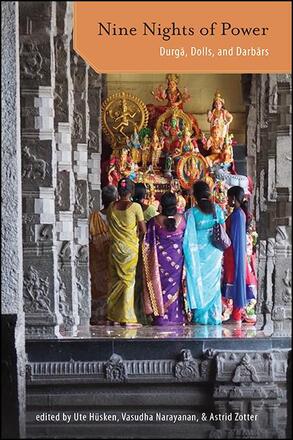
Nine Nights of Power
Durgā, Dolls, and Darbārs
Alternative formats available from:
Explores the rich diversity of narratives, rituals, and participants connected with one of the most important celebrations for Hindus in South Asia and in the diaspora.
Description
The autumnal Navarātri festival—also called Durgā Pūjā, Dassehra, or Dasain—is the most important Hindu festival in South Asia and wherever Hindus settle. A nine-night-long celebration in honor of the goddess Durgā, it ends on the tenth day with a celebration called "the victorious tenth" (vijayadaśamī). The rituals that take place in domestic, royal, and public spaces are closely connected with one's station in life and dependent on social status, economic class, caste, and gender issues. Exploring different aspects of the festival as celebrated in diverse regions of South Asia and in the South Asian diaspora, this book addresses the following common questions: What does this festival do? What does it achieve, and how? Why and in what way does it sometimes fail? How do mass communication and social media increase participation in and contribute to the changing nature of the festival? The contributors address these questions from multiple perspectives and discuss issues of agency, authority, ritual efficacy, change, appropriation, and adaptation. Because of the festival's reach beyond its diverse celebrations in South Asia, its influence can be seen in the rituals and dances in many parts of Western Europe and North America.
Ute Hüsken is Professor and Head of the Department of Cultural and Religious History of South Asia at the South Asia Institute at Heidelberg University, Germany. Her books include The Ambivalence of Denial: Danger and Appeal of Rituals (coedited with Udo Simon). Vasudha Narayanan is Distinguished Professor of Religion and Director of the Center for the Study of Hindu Traditions at the University of Florida. Her books include The Life of Hinduism (coedited with John Stratton Hawley). Astrid Zotter is researcher at Heidelberg Academy of Sciences and Humanities, Germany. Her books include Hindu and Buddhist Initiations in India and Nepal (coedited with Christof Zotter).
Reviews
"This book brilliantly captures the multilayered essence of Navrātri, wherein the festival constantly negotiates itself in a contemporary secular setting, efficiently creating new meanings, retaining older ones, and interacting between the two. It is a highly recommended read for students of Religious and South Asian Studies." — Religious Studies Review